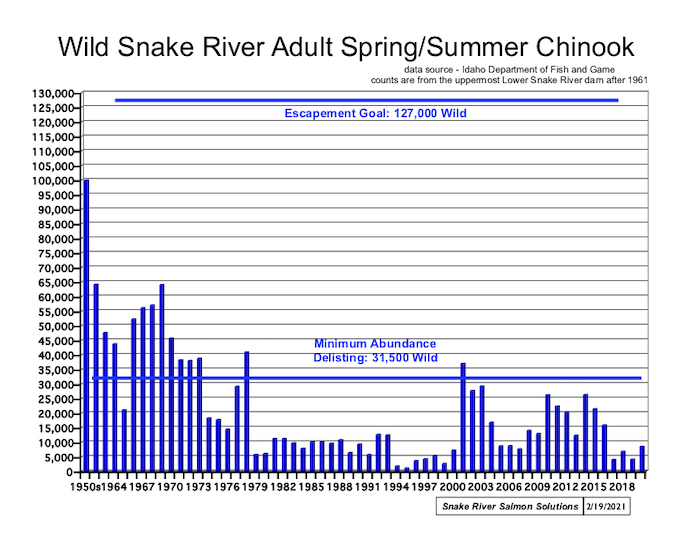forum
library
tutorial
contact

Dams Harm More than Help
by John D. SahrSpokesman-Review, July 14, 2021
|
the film forum library tutorial contact |

|
Dams Harm More than Helpby John D. SahrSpokesman-Review, July 14, 2021 |
 I write in support of removal of the lower Snake River dams. These dams serve primarily to enable barge traffic to transport agricultural goods from the Inland Empire to Pacific Coast ports. The same region is served by rail transport; upgrading the rail capacity can easily meet the transportation needs.
I write in support of removal of the lower Snake River dams. These dams serve primarily to enable barge traffic to transport agricultural goods from the Inland Empire to Pacific Coast ports. The same region is served by rail transport; upgrading the rail capacity can easily meet the transportation needs.
While barge traffic is a reasonable use, these dams interfere with the life cycle of anadromous fish (salmon and steelhead), and produce relatively little electricity. One should also consider the desert country that is used for wheat production: that dry sagebrush steppe is a precious if austere habitat. It is also the case that the Palouse has suffered some of the highest topsoil loss in North America, due to agricultural activities.
In the 1930s and 1940s, the surface water area in Washington state doubled due to irrigation and hydroelectric projects. This was a remarkable achievement, but it was achieved at the expense of prodigious salmon runs, and destruction of desert habitat. Considering the indisputable success of the removal of the two dams on the Elwha River, it is time to contemplate a graceful project of removing dams on the Snake and Columbia rivers.
learn more on topics covered in the film
see the video
read the script
learn the songs
discussion forum
